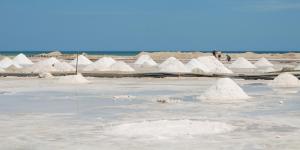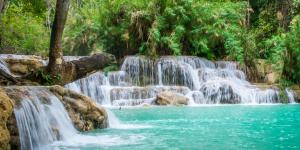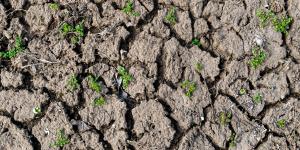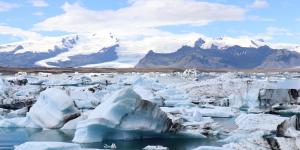Environment (other)
Explore diverse environmental issues beyond conventional topics. Uncover insights into unique phenomena impacting ecosystems and human interaction dynamics.
81 articles

New
New
Artificial intelligence has revolutionized multiple industrial sectors, with further innovation appearing at a staggering rate. The generation of capital, opportunities and solutions to various problems are exciting. They have the potential to benefit societies in many ways, especially in areas such as...

New
New
Also known as salt deserts or salt flats, salt pans are vast expanses of land which are covered by a layer of minerals, mostly in the form of sodium chloride salt. They are considered extreme environments since this concentrated amount of salt makes it very difficult for organisms to survive. Salt flats...

Limestone pavements are geological formations found in limestone terrain that create an exposed flat topography which has features caused by weathering of the rock. This weathering leads to grooves, cracks and cavities which create blocks known as clints which are separated by fissures known as grikes....

Artisanal mining, often practiced in small-scale, informal settings, plays a crucial role in the livelihoods of millions worldwide. However, its environmental impact is profound and far-reaching, affecting ecosystems, water sources, and local communities. From deforestation and soil degradation to toxic...

Asbestos is a naturally occurring mineral once widely used in construction and manufacturing due to its heat resistance and durability. However, asbestos exposure can have serious health consequences, leading to diseases like mesothelioma, lung cancer, and asbestosis. While its use has been heavily regulated...

Sinkholes are openings in the ground which are caused by the gradual or immediate collapse of the surface. While this can be a general sinkhole definition, there are many different types which can be found both in nature and in urban environments. Some sinkholes are caused by natural processes, but an increasing...

Water springs are one of nature’s most insteresting freshwater sources, emerging naturally from the ground due to underground water pressure. But how exactly do they form, and why are they so important? From supplying drinking water to supporting ecosystems, natural springs play a crucial role in sustaining...

Rare earth metals are a group of 17 chemical elements on the periodic table. They have certain magnetic, electrical and optical properties that make them essential in various industries. Used in the manufacture of electronic devices, renewable energy, military equipment and industrial processes, they are...

Erosion is a geological process which creates various landforms both above and below the Earth's surface. The mechanical action of various forces causes material to wear away, with different forces affecting this material in different ways. The material which is subsequently produced is them deposited somewhere...

Water condensation is everywhere around us, from the glistening dew drops on grass to the fluffy clouds drifting by. It's the simple yet profound process where water vapor transforms back into liquid water. This fundamental change shapes our weather, drives the global water cycle, and influences our everyday...

Beneath our feet lies one of Earth's most precious yet often overlooked resources: soil. This thin layer of earth sustains life as we know it, supporting everything from the food we grow to the diverse ecosystems that maintain our planet's health. However, this vital resource faces increasing threats from...

Aquifers are underground water systems that store and transport groundwater through layers of rock and sediment. These natural reservoirs have shaped human civilization since ancient times, when communities first dug wells to access water. Today, cities and farms worldwide still depend on aquifers for...

Earth's polar ice caps are massive frozen formations that shape our planet's climate and ecosystems. These vast sheets of ice, found in the Arctic and Antarctic, play crucial roles in regulating global temperature, sea levels, and ocean currents. Understanding how they form, where they exist, and how...

Environmental factors are the building blocks that shape life on Earth, determining how organisms survive, adapt, and interact within their ecosystems. From the physical and chemical conditions that create habitats to the complex web of relationships between living things, these factors work together...

What makes ecosystems thrive and function? Understanding the difference between biotic and abiotic factors is essential for grasping how ecosystems function. Biotic factors encompass all living organisms and their interactions, while abiotic factors comprise the non-living physical and chemical components of...

The environment encompasses all the living and non-living things around us, forming the natural world that supports life on Earth. It includes everything from the air we breathe and the water we drink to the forests, oceans, and countless ecosystems that maintain the planet's balance. Each part of the...

Also known as a udometer, hyetometer or, most commonly, a rain gauge, a pluviometer is used to measure the amount of liquid precipitation which falls in a specific location during a given period. This liquid precipitation is mostly in the form of rain. knowing rainfall measurements is of great importance...

An anemometer is an instrument used to measure wind speed. This device is essential in various fields such as meteorology, aviation, energy production, navigation and even certain outdoor sports. Its operation varies depending on the type, but all models collect key information to analyze wind intensity....

An altimeter is a device that measures altitude, meaning the vertical distance between a given point and certain fixed level. In most practical uses, this fixed level is sea level. Its use is essential in various activities such as aviation, mountaineering and outdoor sports. In these capacities, accurate...

Total Dissolved Solids (TDS) refer to the combined content of all inorganic and organic substances, including minerals, salts, metals, and other compounds, dissolved in a liquid—usually water. These particles are so small that they pass through a typical water filter, distinguishing them from suspended solids...

A barometer is an instrument used to measure atmospheric pressure, a fundamental metric for predicting changes in the weather. While they may be less common in homes than they once were, barometers are still vital pieces of equipment to help assess atmospheric conditions. In this article from thedailyECO,...

The various types of global climates are categorized by different factors and systems. These can be dependent on their ecosystem type, location, altitude and other determinants. The continental climate is a category of climate which is determined by the Köppen climate classification. This is a system based...

A mountain climate is the localized climate of a mountainous area. Due to the greater altitude, the atmospheric conditions are altered, resulting in lower temperatures and significant climate variability. Temperature and precipitation patterns change significantly at different altitudes. For this reason,...

Atmospheric pressure, the force exerted by the weight of the air above us, plays a crucial role in weather patterns, aviation, and even our daily lives. Measuring this pressure helps scientists and meteorologists predict weather changes and understand atmospheric behavior. But how exactly is atmospheric...

The Earth's atmosphere is in constant motion, driven by the uneven heating of the planet's surface by the sun. This dynamic movement, known as general atmospheric circulation, shapes global wind patterns, influences climate zones, and affects weather systems around the world. Understanding these circulation...

Hot springs can be found all around the world, with notable concentrations in Latin American countries, as well as in Europe and Asia. These natural formations are popular tourist attractions due to the numerous health benefits they offer. he warm, soothing waters of hot springs help to relax both the...

Examining the concept of an endorheic basin is important for understanding how water is distributed and used in different regions of the world. This is very important for geographical and hydrological studies. An endorheic basin is defined as a region in which rainwater and river water have no outlet to...

Bodies of water, ranging from expansive oceans to winding streams, are crucial elements of our planet. They are categorized by their size, origin, and physical properties, and play a fundamental role in sustaining life on Earth. These bodies of water are integral to ecological health, human well-being, and...

Monsoon climates are characterized by distinct wet and dry seasons driven by seasonal wind shifts. This climatic pattern is prevalent in regions near the equator, particularly in South Asia, Southeast Asia, West Africa, and parts of Australia. Monsoon climates have a profound impact on agriculture, as the...

Hydrology is the scientific discipline that studies the water cycle on Earth, including its distribution and movement, as well as its physical and chemical properties. This discipline covers the analysis of precipitation, water runoff, soil infiltration, river currents, aquifer recharge, evaporation and...

Hydrography is the science responsible for the study and mapping of the Earth's bodies of water, both above and below the Earth's surface. This science provides essential data for navigation, resource management and prevention of natural disasters. Its findings are not only used by experts, but it helps...

Air might seem like a simple, invisible blanket around our planet, but it's actually a fascinating mix of gases that play a crucial role in keeping us alive and shaping the Earth. Mostly made up of nitrogen and oxygen, air is not just essential for breathing; it also helps regulate temperature, protects...

For millennia, humanity has cast its nets into the ocean's bounty. Early fishing practices were small-scale and focused on meeting immediate needs. However, with population growth and technological advancements, the impact on fish stocks became increasingly evident. In this sense, the Industrial Revolution...

The threat of desertification to ecosystems, livelihoods, and food security is one of the most pressing environmental challenges of our time. During this process, fertile lands are transformed into arid, unproductive terrain, largely due to climate change and unsustainable human activities such as deforestation,...

Unlike car exhaust fumes that dissipate quickly, ozone is a hidden danger lurking in our air. This gas isn't directly emitted, but rather forms when pollutants react under specific conditions, like sunshine. The result? Ozone, which can travel long distances and pose a significant health risk. According...

The climate of a certain area is its long-term weather patterns which are established over time, as opposed to weather which changes regularly. Desert climate is the long-term weather patterns of desert areas, geographical ranges which are defined by having little precipitation and subsequent harsh living...

There are various different types of watercourse, meaning the way in which water flows through a channel of land. This manner in which the water flows is a stream, but this definition can be complicated by the fact there are many different types of channels through which water can flow. For example, we may...

The study of bioclimates is essential to understanding the distribution of climatic conditions on Earth. A bioclimate is the set of climatic conditions that determine the type of flora and fauna which can survive in a given geographical area. It is this geographical area which we can refer to as a bioclimatic...

The ocean depths hold some of the most enigmatic and unexplored landscapes on Earth. Among these mysteries lie the abyssal plains, vast underwater stretches cloaked in eternal darkness and immense pressure. These regions, far from the reach of sunlight, have long remained a source of fascination and intrigue...

Hygrometers are devices used to measure the relative humidity of air or solid materials. Many of us associate them with monitoring or predicting the weather, but these instruments are used in a variety of applications. Such applications include indoor climate monitoring, agriculture, meteorology and the...

Erosion is the process by which the outermost layer of land is gradually worn away. The land which is worn down is usually in the form of rock or soil. Land erosion is caused by the abrasive action of physical agents which exert force on the geographical material. These agents can be in the form of water,...

Also know as the Peru Current, the Humboldt Current is an oceanic current in the Pacific that extends from Chile to Ecuador, including the Galapagos Islands. Its origin lies in the combined effects of the Earth's rotational movement and the centrifugal force exerted by the oceanic water masses of the equatorial...

While commonly associated with flowing streams and pristine lakes, the majority of readily accessible freshwater (excluding polar ice caps and glaciers) resides underground as groundwater. Half the world's inhabitants rely on groundwater for primary or secondary water, making them a significant contributor...

You may have heard the common idiom or some variation which claims a red sky at night is a sailor's delight, but a red sky at morning is a sailor's warning. This is a piece of conventional wisdom which relates to how the sky can indicate potential weather patterns. Not all conventional wisdom is accurate. Although...

In the realm of fluid dynamics, a thermocline emerges as a distinct layer in a body of water where there is a rapid change in temperature with depth. This invisible boundary acts as a barrier, separating warmer, sunlit waters from the cooler, deeper layers. The presence of a thermocline plays a crucial...

Deep ocean currents are driven by a thermohaline circulation, a phenomenon that regulates the global distribution of heat and nutrients in the world's oceans. This complex system of marine currents arises from variations in water temperature and salinity, factors that affect its density. In the polar regions,...

Glacial erosion – a relentless geological process – has shaped the land across vast swathes of our planet. From the Himalayas' towering peaks to Patagonia's expansive plains, its signature remains etched in U-shaped valleys, polished rock surfaces, and dramatic glacial landforms. Understanding this powerful...

The halocline is zone within a body of water which has a highly pronounced salinity gradient. It is characterized by having an abrupt change of salinity as we go deeper into the body of water, creating distinct transition zones which affect water density and stratification. Since these characteristics...

A snowfield is an accumulation of snow that persists throughout the year, even during warmer periods and the absence of snowfall. The snow falls on top of ice, partly why it is able to remain even in these more temperate periods. While some may see them simply as a field of snow, these geographic features...

Also known as salt pans, salt flats are large areas of ground which are covered in salts due to evaporated water. These are naturally occurring areas which are usually in the form of shallow water basins. The water in these basins need to be saline, meaning they naturally contain a lot of salt. This means...
